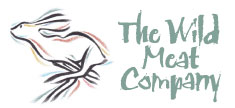
- MENU
/collections/gravy-stock-bones
true
0
01-12-2025
02-12-2025
03-12-2025
08-12-2025
09-12-2025
10-12-2025
11-12-2025
12-12-2025
15-12-2025
16-12-2025
17-12-2025
18-12-2025
19-12-2025
21-12-2025
22-12-2025
23-12-2025
24-12-2025
25-12-2025
26-12-2025
31-12-2025
01-01-2026
02-01-2026
05-01-2026
12-01-2026
19-01-2026
26-01-2026
27-12-2025
28-12-2025
29-12-2025
30-12-2025
There's nothing in your basket.
Would you like to see our products?

Healthy natural meat from the Suffolk countryside direct to your home
/collections/gravy-stock-bones
false
0
01-12-2025
02-12-2025
03-12-2025
08-12-2025
09-12-2025
10-12-2025
11-12-2025
12-12-2025
15-12-2025
16-12-2025
17-12-2025
18-12-2025
19-12-2025
21-12-2025
22-12-2025
23-12-2025
24-12-2025
25-12-2025
26-12-2025
31-12-2025
01-01-2026
02-01-2026
05-01-2026
12-01-2026
19-01-2026
26-01-2026
27-12-2025
28-12-2025
29-12-2025
30-12-2025